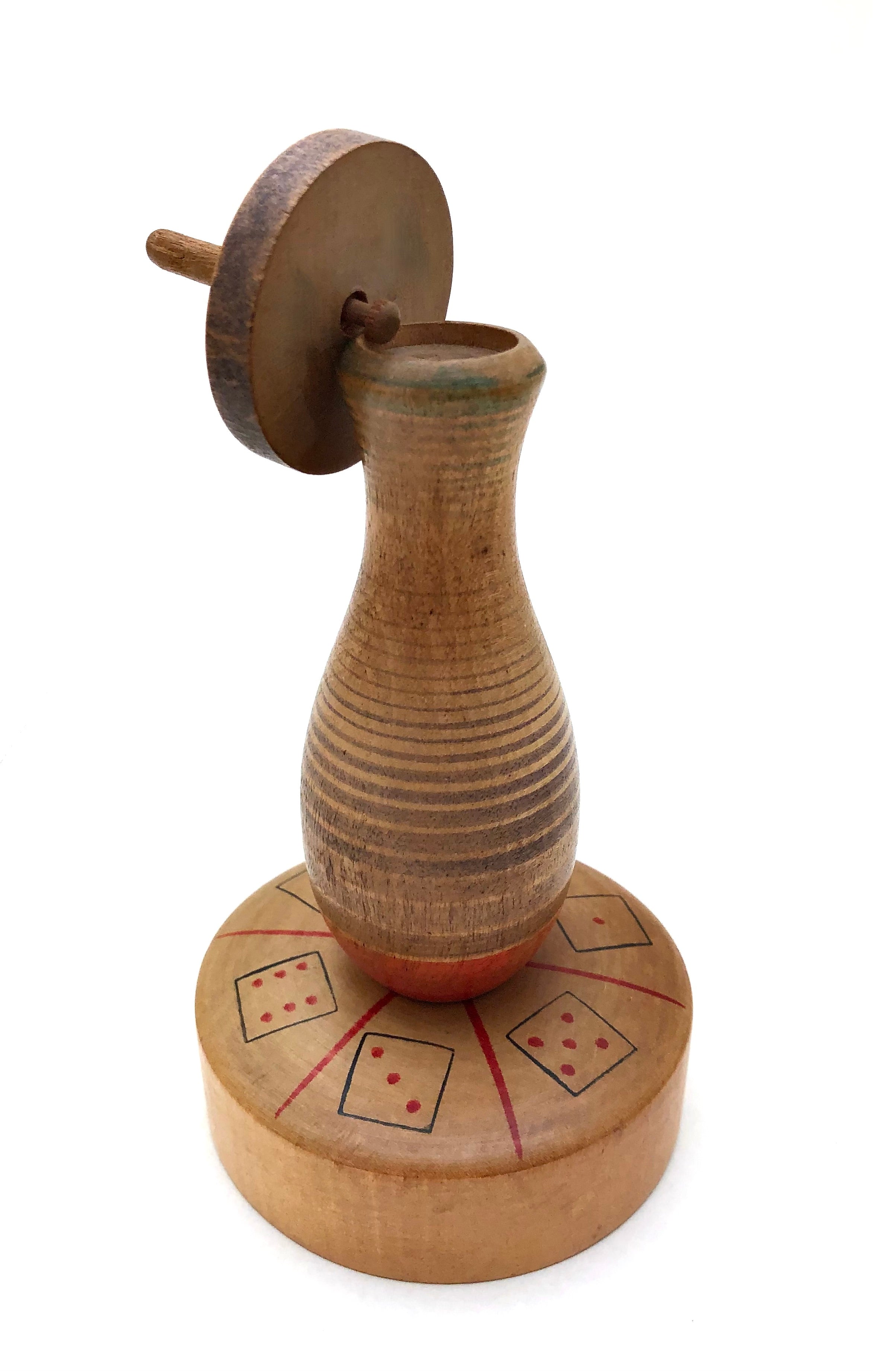

Vintage Japanese Gambling Toy and Spinning Top (Koma) by Mamoru Tsuta
Dimensions: 6-3/4”h x 3-1/2” dia. (spinning top 1-5/8” h x 1-3/4” dia)
Toys and Tops of many shapes and materials have been found throughout Japan and are among the most ancient toys known.
This beautiful top (Koma) is hand-made of one piece of wood used for amusement and gambling. The kiji-shi (woodworkers), during this period, used their spare time making souvenirs for visitors at the Onsens. The piece is a beautifully formed toy with a decoration called Rokoru moyo which is varied circular banding in green, gray, and red on the vase-like shape which is hollowed out to support and control the spinning top. The piece is weight to balance producing an overall circular motion. The spinning top is made to rotate in the hollow of the wooden sleeve and to keep it from falling off its base by a hand-fashioned tip that is part of the axle stem for spinning. The top has a red circular motif on the top. The base has divisions with numbered two-dimensional dice “pips” (small red dots on each face representing a six-sided face), so that when the top is spun it stops just above the numbered dice as part of the counting process identifying the winner. The piece is unsigned but identified in a Japanese Toy Industry Edition Series Volume 8 and as being made by Mamoru Tsuta.
Condition: Excellent condition means that the piece has no cracks or repairs with fine and original details consistent with the age and standards of collectible Vintage Japanese Toys. For those who want to start or expand their collection, Japanese toys and tops continue to be sought-after collectible highly valued artifacts.
ADDITIONAL INFORMATION: Koma were originally made in Japan using spiral seashells (“bai”) with sand and sealing them with molten wax. Toys and Tops of many shapes and materials have been found throughout Japan and are among the most ancient toys known. In Japan, top playing was a boys’ game bound to specific events and seasons for which spinning tops were serious games, (fighting tops) and general spinning tops being an everyday toy is symbolic of housebound children in winter and on holidays. Besides games, toys have historically been used for gambling and prophecy.
